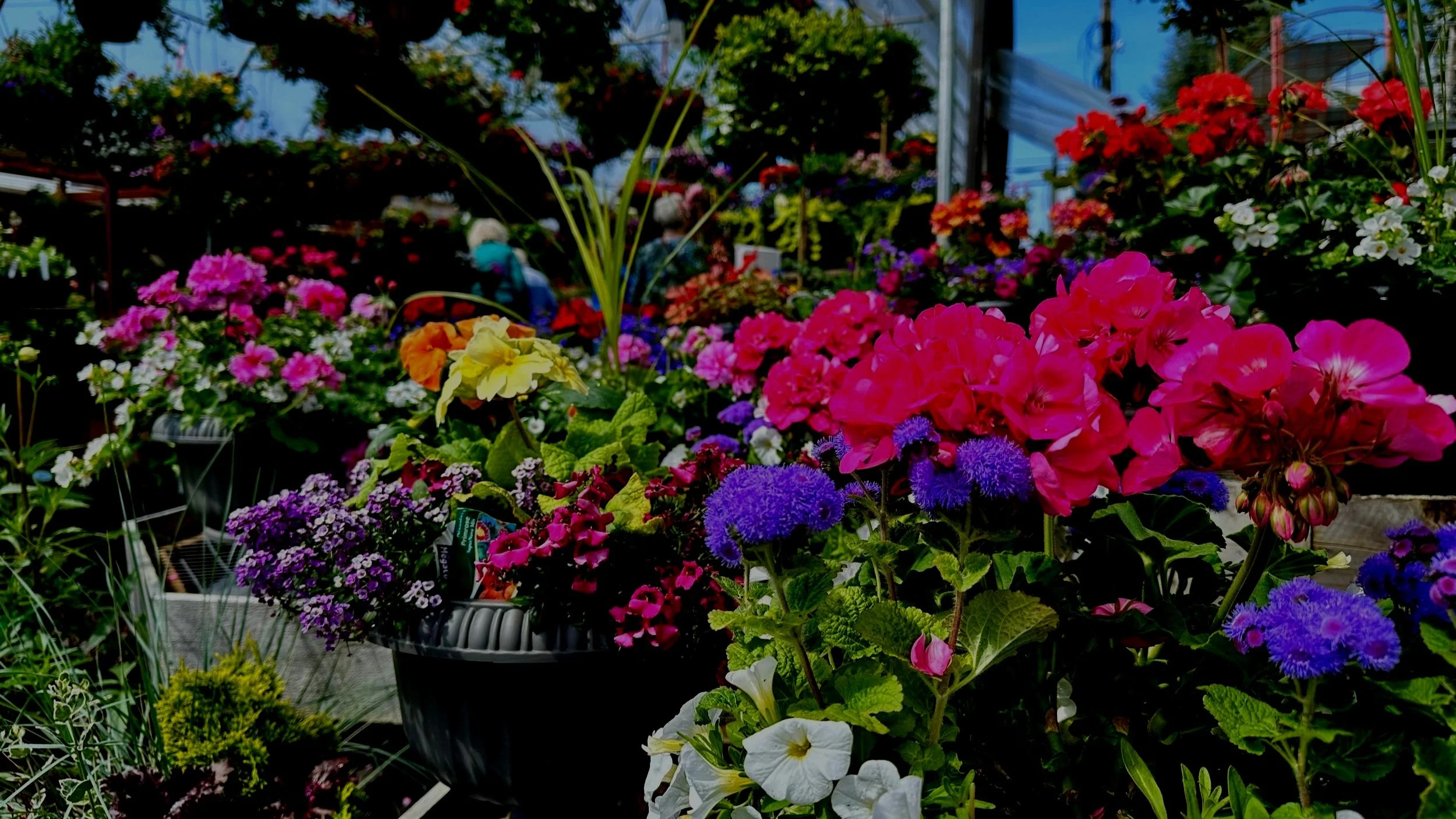May is, without a doubt, the primary month for planting up our containers. In the garden center you will find an endless supply of annuals and perennials ready to be creatively combined, for what will hopefully be a summer-long display of blooms. But to be successful (as in “over the top” successful) with our pots, we need to pay attention to a few details. Here are my thoughts on “growing in” containers…
Size matters. Containers (either hanging or otherwise) come in a wide assortment of shapes and sizes. Galvanized livestock troughs are a big hit these days, although it seems that most gardeners only use them for veggies. Sunnyside (as well as other garden centers) has a ton of frost proof ceramic pots that are so attractive that they can actually be placed empty around the garden as colorful accents. Hanging baskets can be found in plastic, wood or my favorite, wire with moss of cocoa fiber liners. The larger the container, the easier it will be to maintain.
Drainage matters. No matter what size your container is, make sure it drains. Roots do not like to stand in water.
Soil matters. Simply put, you get what you pay for. The best soils (like E.B. Stone’s Organic Ultimate Recipe or similar brands) contain all the major and minor nutrients to kick start your new plants. They also have the ability, because of their peat or coir content, to retain those nutrients for later consumption.
Proper watering matters. When we water our containers, it is important to make sure that the entire soil mass gets wet. Early in the season it is not so critical, in fact a person can actually kill a planting by overwatering it in the early months. But if you want your containers to continue to thrive through the summer, then you will have to water them more frequently. For a hanging basket this might mean running the hose on it until the water comes flowing out all the drainage holes, not just one. Keeping the soil at the best moisture content may be the most difficult part of growing any plant, either in a container or in the ground.
Proper feeding matters. This is so critical. Plants in containers have a limited amount of soil to pull their nutrients from and once it is used up, they will start to decline. Whether you purchase an already made-up container or make your own, don’t forget to feed it. You can do this with a combination of slow-release fertilizer (like Osmocote) worked into the soil at planting time and/or spread over the surface, along with a weekly feeding of a soluble feed, like Sea Grow, which contains seaweed extract - depending on how you dilute it, you can feed every time you water or weekly. Either way, don’t skimp on the food!
As for what to plant, well, whatever floats your boat works for me! Break the rules, move out of your comfort zone, and have some fun. As long as there is lots of color and some contrasting textures, you can’t go wrong. Just remember, if you pay attention to the key points above and do some grooming throughout the season, you should be wildly successful. At the end of the summer, rip it all out, save most of the soil, add some new soil and fertilizer, and fill it back up with bulbs and winter hardy pansies or evergreen perennials. There is nothing more depressing than an empty container sitting around the garden. At the heart of it all, make sure to have some fun!


